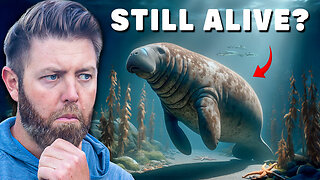Premium Only Content

Emu Bird.
The emu(Dromaius novaehollandiae) is the second-tallest living bird after its ratite relative the ostrich. It is endemic to Australia where it is the largest native bird and the only extant member of the genus Dromaius. The emu's range covers most of mainland Australia, but the Tasmanian, Kangaroo Island and King Island subspecies became extinct after the European settlement of Australia in 1788.
Emu
Temporal range: Middle Miocene – present
PreꞒ
Ꞓ
O
S
D
C
P
T
J
K
Pg
N
Miocene–present

Conservation status

Least Concern (IUCN 3.1)
Scientific classificationKingdom:AnimaliaPhylum:ChordataClass:AvesInfraclass:PalaeognathaeOrder:CasuariiformesFamily:CasuariidaeGenus:DromaiusSpecies:
D. novaehollandiae
Binomial nameDromaius novaehollandiae
(Latham, 1790)
Subspecies
D. n. novaehollandiae (Latham, 1790)
D. n. woodwardi (Mathews, 1912) (disputed)
†D. n. baudinianus Parker, S.A., 1984
†D. n. diemenensis Le Souef, 1907
†D. n. minor Spencer, 1906
Distribution in redSynonyms
Casuarius novaehollandiae Latham, 1790
Dromiceius novaehollandiae (Latham, 1790)
Casuarius australis Shaw, 1792
Dromaius ater Vieillot, 1817
Dromiceius emu Stephens, 1826
Casuarius diemenianus Jennings, 1827
Dromiceius major Brookes, 1830
Dromaeus irroratus Bartlett, 1859
Dromaeus ater (Blyth, 1862)
call of a female emu at the ZOOM Erlebniswelt Gelsenkirchen in Germany
Emus are soft-feathered, brown, flightless birds with long necks and legs, and can reach up to 1.9 metres (6.2 ft) in height. Emus can travel great distances, and when necessary can sprint at 48 km/h (30 mph); they forage for a variety of plants and insects, but have been known to go for weeks without eating. They drink infrequently, but take in copious amounts of water when the opportunity arises.
Breeding takes place in May and June, and fighting among females for a mate is common. Females can mate several times and lay several clutches of eggs in one season. The male does the incubation; during this process he hardly eats or drinks and loses a significant amount of weight. The eggs hatch after around eight weeks, and the young are nurtured by their fathers. They reach full size after around six months, but can remain as a family unit until the next breeding season. The emu is an important cultural icon of Australia, appearing on the coat of arms and various coins. The bird features prominently in Indigenous Australian mythology.
The bird is sufficiently common for it to be rated as a least-concern species by the International Union for Conservation of Nature. Despite this, some local populations are listed as endangered, with subspecies such as the Tasmanian emu going extinct by the 1800s. Threats to their survival include predation of their eggs, roadkills, and fragmentation of their habitats.
-

IsaiahLCarter
3 hours agoApostate Radio #009: Standing Up with Eric Abbenante
16.3K1 -
 11:53
11:53
Forrest Galante
1 hour agoIs This Giant Extinct Sea Cow Still Alive?
12.3K4 -
 1:14:47
1:14:47
Josh Pate's College Football Show
5 hours ago $2.55 earnedTennessee & Nico Disaster | Portal Chaos Ahead | Biggest “What-Ifs” | Truth About Big Noon Kickoff
27.6K3 -

Tundra Tactical
4 hours ago $0.33 earned$3200 ZEV HEARTBREAKER Contest!!! TONIGHT On The Worlds Okayest Gun Live Stream
25.8K -
 LIVE
LIVE
IcyFPS
2 hours ago🟢SOLO LEVELING LIVE 🟢 PREMIUM PAYDAY | SUNDAY GUNDAY |
153 watching -
 LIVE
LIVE
Damysus Gaming
2 hours agoWeaving into the Deep South: South of Midnight First Play!
112 watching -
 LIVE
LIVE
EricJohnPizzaArtist
4 hours agoAwesome Sauce PIZZA ART LIVE Ep. #43: Misses Ma’am!
206 watching -
 54:59
54:59
Stephen Gardner
8 hours ago🔥Biden insider: Obama was Pulling Strings | Trump Derangement is RAGING!
65.5K254 -
 LIVE
LIVE
Delnorin Games
5 hours ago🔴 Live - Star Citizen
363 watching -
 1:07:23
1:07:23
Vedic compatability astrology
3 hours agoDiscover Wisdom from Dr. Andrew Dutta!
15.2K